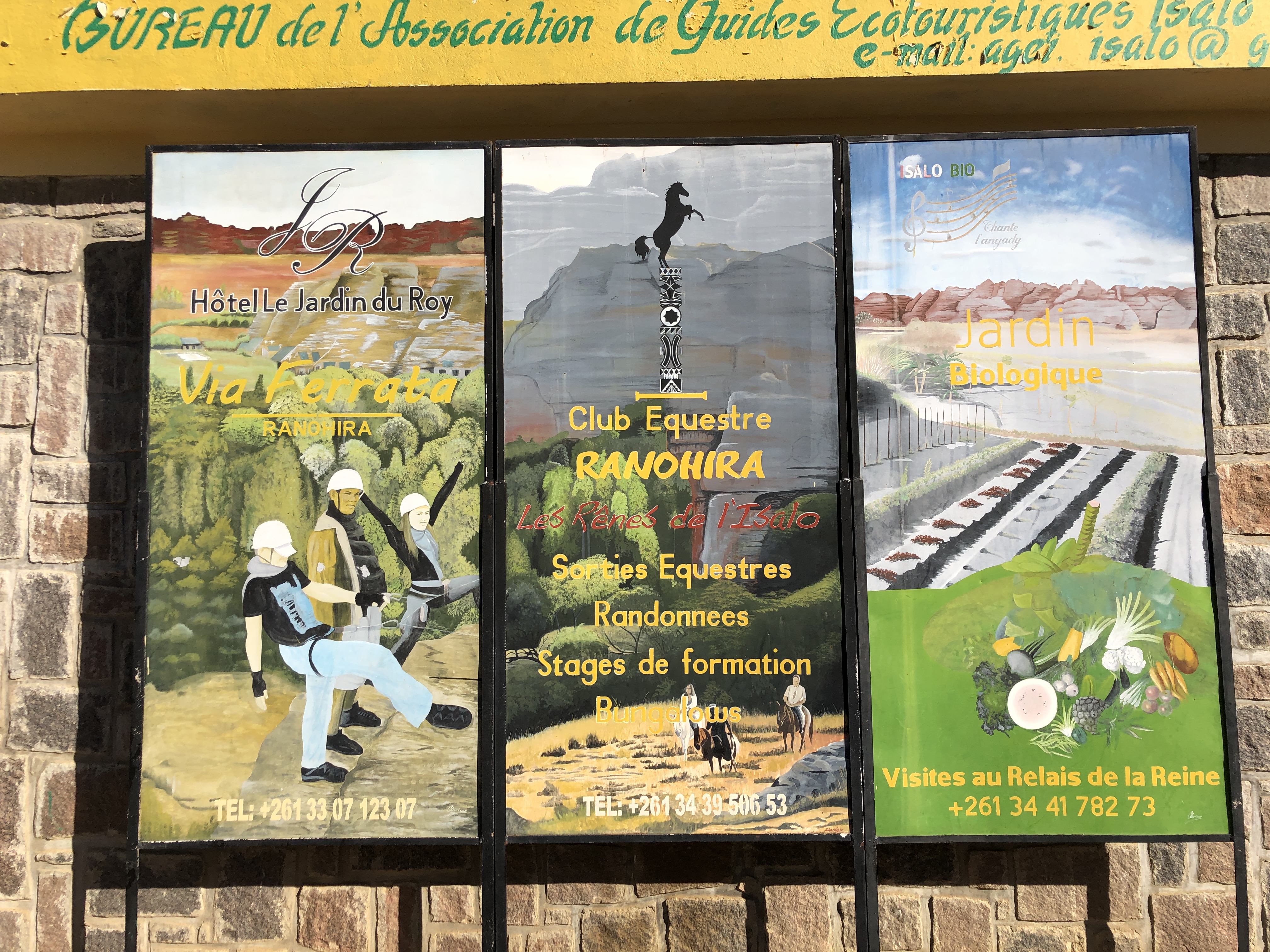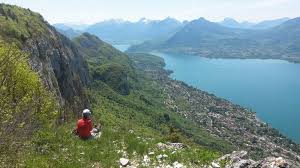
Isalo is about 14 hours non-stop drive from the capital Antananarivo. But on our itinerary, we had spent a few nights along the way in Antsirabe, Ramonafana and Fianarantsoa before arriving at Isalo National Park.

Isalo is like a museum dedicated to the art of the desert canyon: canyons full of yellow savannah grass, bone-dry canyons, sculpted buttes, white-washed canyons, vertical rock walls, and best of all, deep canyon floors with streams, lush vegetation, and pools for swimming, all of which you’ll be able to explore along some of the park’s numerous trails.
The park is served by the small town of Ranohira, which contains the park office and a handful of hotels and restaurants; the better resorts are further out along the park’s southern border.
Distinguished by a canyon and beautiful, rolling plains, the Parc National de Isalo is an attractive reserve of Madagascar’s land and wildlife. You can spend one full day hiking in the canyon or for the more adventurous, even a few days camping in the wilderness. There are lots to explore in this national park, from waterfalls to hiking trails to spotting lemurs. We chose to do the half day hike, which involves going to the Blue and Black pools.

This is one of the easier treks that we have done so far in Madagascar. We followed our guide walking along the base of the canyon and staring up at the top of the rocks in awe. Since it was at the base, it was sheltered by the rocks and we were not sweating much.

This national park is also known for spotting lemurs. Just half an hour into the hike, our guide pointed out the Sifaka to us, our fifth species of lemur that we have encountered in Madagascar. Sifaka lemurs have been listed as being critically endangered. These primates spend most of their time in the trees, but don’t get around in the same way that other lemurs do. Sifakas remain upright, and they leap quickly from tree to tree by jumping with their powerful hind legs. In this way, they clear distances of over 30 feet.

Sifakas are a genus of lemur from the family Indriidae within the order Primates. The name of this lemur is derived from their characteristic “shi-fak” alarm call. It is also interesting to see their agility, they can move quickly on the ground, which they do using a two-legged sideways hop.




In 2010, a fire ravaged through the national park and destroyed much of the remaining forest along the canyon. The effects of the fire can still be seen today in many parts of the park.
After walking for about one and a half hours, we reached a natural stone cave that overlooks a crystal-clear waterfall. It tumbles into a deep green pool surrounded by overhanging pandanus trees. The pool is a true oasis in the heat of the canyons, which offers a welcome refreshment after an exhausting hike. We did not swim in the pools as we were not prepared to change and also the water was quite cold. Total time taken was about 3 hours. As we turned back towards the entrance, there was an opening in the forest and people were cooking lunch over barbecues. They asked if we wanted any food but we declined politely as we were planning to go to the next town for lunch.


The pools are named according to their colour because when the sun shines, it makes the waters appear blue for the first one. And the black pool is because it is deeper and appears a darker colour. There is a nice waterfall which you can climb even higher up, but it is not recommended to jump off the waterfall unlike in Southeast Asia.
Another place to check out on your way to Tulear would be Andringitra National Park.

PARC ̈NATIONAL ̈D’ANDRINGITRA ̈& ̈THE ̈TSARANORO ̈VALLEY
Andringitra is the greatest national park south of Tana, and perhaps in Madagascar. It encompasses a majestic central mountain range with two gorgeous valleys, the Namoly and the Tsaranoro, on either side, forming a paradise for walkers and climbers. There are spectacular views in all directions, 100km of well-developed hiking trails, excellent accomodation, river swimming and three extraordinary peaks, including Pic Boby (Ima- rivolanitra), at 2658m the second-highest peak in the country.
The main MNP ̈office is in the Namoly Valley, about three hours’ drive from Ambalavao. Here you can hire guides, porters, cooks and equipment. Food can be arranged too, if you call one day ahead.

Entrance permits for 1/2 days are Ar10,000/15,000. Guide fees start at Ar15,000 and cooks/porters about half that, with prices dependent on how long you want to hike. Temperatures fall below zero at night in winter, so come prepared.
If you’re not camping, Camp ̈Catta (Parc National d’Andringitra; bun- galows without/with bathroom Ar48,000/60,000) is the place to stay, with a breathtaking location at the foot of the massif and quality food and lodging.
If you don’t have your own transport, taxis-brousses run between Ambalavao and Namoly Tuesday or Thursday. Otherwise Camp Catta can organise transfers.


